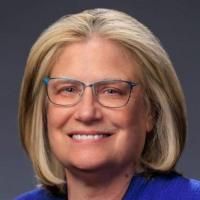Sibling umbilical cord blood infusion is safe in young children with cerebral palsy.
Date
2021-09
Journal Title
Journal ISSN
Volume Title
Repository Usage Stats
views
downloads
Citation Stats
Attention Stats
Abstract
Preclinical and early phase clinical studies suggest that an appropriately dosed umbilical cord blood (CB) infusion has the potential to help improve motor function in young children with cerebral palsy (CP). As many children with CP do not have their own CB available, use of allogeneic cells would extend access to this potentially beneficial therapy to more children. In this phase I, open-label study, 15 children, aged 1 to 6 years, with moderate to severe spastic CP were treated with a single intravenous infusion of allogeneic human leukocyte antigen (HLA) matched or partially matched sibling CB with a cell dose of ≥2.5 × 107 cells/kg based on the pre-cryopreservation count (median infused cell dose, 3.3 × 107 ; range, 1.8-5.2 × 107 ). There were a total of 49 adverse events (AEs) over a 2-year time period, but there were no AEs related to the CB infusions. Specifically, there were no acute infusion reactions and no antibody formation against platelets, red blood cells, or donor-specific HLA antigens. Donor cells were not detected in peripheral blood 6 months later. Six months after infusion, participants were assessed for response and experienced a mean ± SD increase of 4.7 ± 2.5 points on the Gross Motor Function Measure-66 and 1 ± 2.9 points on the Peabody Gross Motor Quotient. Appropriately dosed, allogeneic partially or fully HLA-matched sibling CB infusion is well tolerated and potentially beneficial in young children with CP.
Type
Department
Description
Provenance
Subjects
Citation
Permalink
Published Version (Please cite this version)
Publication Info
Sun, Jessica M, Laura E Case, Mohamad A Mikati, Joan M Jasien, Colleen McLaughlin, Barbara Waters-Pick, Gordon Worley, Jesse Troy, et al. (2021). Sibling umbilical cord blood infusion is safe in young children with cerebral palsy. Stem cells translational medicine, 10(9). pp. 1258–1265. 10.1002/sctm.20-0470 Retrieved from https://hdl.handle.net/10161/24551.
This is constructed from limited available data and may be imprecise. To cite this article, please review & use the official citation provided by the journal.
Collections
Scholars@Duke

Jessica Muller Sun

Laura Elizabeth Case
Laura E Case, PT, DPT, MS, PhD, PCS, C/NDT is a board-certified clinical specialist in pediatric physical therapy. She has dedicated her career to teaching, research in childhood-onset neuromusculoskeletal disorders, and to the lifelong treatment of people with childhood-onset neurological and neuromuscular disorders such as cerebral palsy, traumatic brain injury, Duchenne muscular dystrophy, spinal muscular atrophy, Pompe disease, myelodysplasia, juvenile rheumatoid arthritis, and brachial plexus injury.
She has been involved in numerous clinical trials for the treatment of disorders including Pompe disease and other metabolic disorders, cerebral palsy, Duchenne muscular dystrophy, and spinal muscular atrophy. Dr. Case has participated in the development of international guidelines for the management of Duchenne muscular dystrophy, Pompe disease, and other glycogen storage diseases.
She teaches and consults internationally, has worked on a number of Center for Disease Control (CDC) task forces, has served on numerous committees and task forces in the pediatric section of APTA, served two terms as NC State Representative to the APTA Section on Pediatrics, and is a member of the North American Pompe Registry Board of Advisors.

Mohamad Abdul Mikati
Mohamad A. Mikati M.D., is the Wilburt C. Davison Professor of Pediatrics, Professor of Neurobiology, and the 2008-2025 Chief of the Division of Pediatric Neurology. Dr. Mikati’s clinical research has centered on characterization and therapy of pediatric epilepsy and neurology syndromes, describing several new pediatric neurological entities with two carrying his name (POSSUM syndromes # 3708 and 4468), developing novel therapeutic strategies for epilepsy and related disorders particularly Alternating Hemiplegia of Childhood, and applying cutting edge genetic and Magnetic Resonance Imaging techniques to drug resistant pediatric epilepsy. In the laboratory he has elucidated mechanisms of seizure related neuronal injury, particularly those related to the ceramide pathway, and demonstrated neuroprotective effects of several agents including erythropoietin. Most recently he has concentrated his laboratory research on the pathophysiology of ATP1A3 dysfunction in the brain as model for epilepsy and of Alternating Hemiplegia of Childhood. He has more than 290 peer reviewed publications, 400 abstracts 41 chapters one book and two booklets. He also has more than 10,497 citations in the literature with an h-index of 58 and an i-10index of 190. Dr. Mikati has written chapters on epilepsy and related disorders in the major textbooks of Pediatrics and Pediatric Neurology including Swaiman’s Pediatric Neurology and Nelson’s Pediatrics. Before joining Duke in 2008 he had completed his M.D. and Pediatric training at the American University of Beirut, his Neurology at the Massachusetts General Hospital, his Neurophysiology at Boston Children’s Hospital and had been on the Faculty at Harvard as Director of Research in the Epilepsy Program at Boston Children’s Hospital and then as Professor and Chairman, Department of Pediatrics, Founder and Director of the Adult and Pediatric Epilepsy Program at the American University of Beirut. Dr. Mikati has had several international leadership roles including being President of the Union of the Middle Eastern and Mediterranean Pediatric Societies, on the Standing Committee of the International Pediatric Association (IPA), Chair of the Strategic Advisory Group on Early Childhood Development of the IPA, Officer of the International Child Neurology Association, Consultant to UNICEF, WHO, and the American Board of Pediatrics. He was selected to organize and chair the American Epilepsy Society's Merritt-Putnam Symposium and was one of only two Pediatric Neurologists, initially chosen worldwide, on the WHO advisory committee for the International Classification of Disease. He has received several national and international honors including, among others, Merritt Putnam American Epilepsy Society Fellowship Award, Harvard Community Health Plan Peer recognition Award, Debs Research Award, Hamdan Award for contributions to Medicine, Hans Zellweger Award for contributions to Pediatric Neurology, Patient Choice Award and the Michael Frank Award for research and lifetime contributions to the field of Pediatric Neurology.
Colleen A McLaughlin

Gordon Worley
Dr. Gordon Worley specializes in Neurodevelopmental Disabilities, a sub-specialty of Pediatrics focusing on the management of the medical problems of children with physical disabilities. The principal diagnoses he treats are cerebral palsy, spina bifida, and Down syndrome. HIs research pertains to clinical problems of children with these conditions. Current research interests include genetic factors influencing outcomes of Extremely Low Birth Weight Infants using analyses of a large data set; comparison of outcomes of prenatal (in utero) surgery vs postnatal for lesion closure in meningomyelocele using the National Spina Bifida Patient Registry; Down Syndrome Disintegrative Disorder; and associations of ADHD with high risk sexual behaviors using analyses of a large data set.

Jesse David Troy
I am the Associate Director of Graduate Studies for the Master of Biostatistics program. I am also a co-director of the Clinical Research Training Program. My current research is in cancer therapeutics and palliative care at the Duke Cancer Institute.

Joanne Kurtzberg
Dr. Kurtzberg is an internationally renowned expert in pediatric hematology/oncology, pediatric blood and marrow transplantation, umbilical cord blood banking and transplantation, and novel applications of cord blood and birthing tissues in the emerging fields of cellular therapies and regenerative medicine. Dr. Kurtzberg serves as the Director of the Marcus Center for Cellular Cures (MC3), Director of the Pediatric Transplant and Cellular Therapy Program, Director of the Carolinas Cord Blood Bank, and Co-Director of the Stem Cell Transplant Laboratory at Duke University. The Carolinas Cord Blood Bank is an FDA licensed public cord blood bank distributing unrelated cord blood units for donors for hematopoietic stem cell transplantation (HSCT) through the CW Bill Young Cell Transplantation Program. The Robertson GMP Cell Manufacturing Laboratory supports manufacturing of RETHYMIC (BLA, Enzyvant, 2021), allogeneic cord tissue derived and bone marrow derived mesenchymal stromal cells (MSCs), and DUOC, a microglial/macrophage cell derived from cord blood.
Dr. Kurtzberg’s research in MC3 focuses on translational studies from bench to bedside, seeking to develop transformative clinical therapies using cells, tissues, molecules, genes, and biomaterials to treat diseases and injuries that currently lack effective treatments. Recent areas of investigation in MC3 include clinical trials investigating the safety and efficacy of autologous and allogeneic cord blood in children with neonatal brain injury – hypoxic ischemic encephalopathy (HIE), cerebral palsy (CP), and autism. Clinical trials testing allogeneic cord blood are also being conducted in adults with acute ischemic stroke. Clinical trials optimizing manufacturing and testing the safety and efficacy of cord tissue MSCs in children with autism, CP and HIE and adults with COVID-lung disease are underway. DUOC, given intrathecally, is under study in children with leukodystrophies and adults with primary progressive multiple sclerosis.
In the past, Dr. Kurtzberg has developed novel chemotherapeutic drugs for acute leukemias, assays enumerating ALDH bright cells to predict cord blood unit potency, methods of cord blood expansion, potency assays for targeted cell and tissue based therapies. Dr. Kurtzberg currently holds several INDs for investigational clinical trials from the FDA. She has also trained numerous medical students, residents, clinical and post-doctoral fellows over the course of her career.
Unless otherwise indicated, scholarly articles published by Duke faculty members are made available here with a CC-BY-NC (Creative Commons Attribution Non-Commercial) license, as enabled by the Duke Open Access Policy. If you wish to use the materials in ways not already permitted under CC-BY-NC, please consult the copyright owner. Other materials are made available here through the author’s grant of a non-exclusive license to make their work openly accessible.
